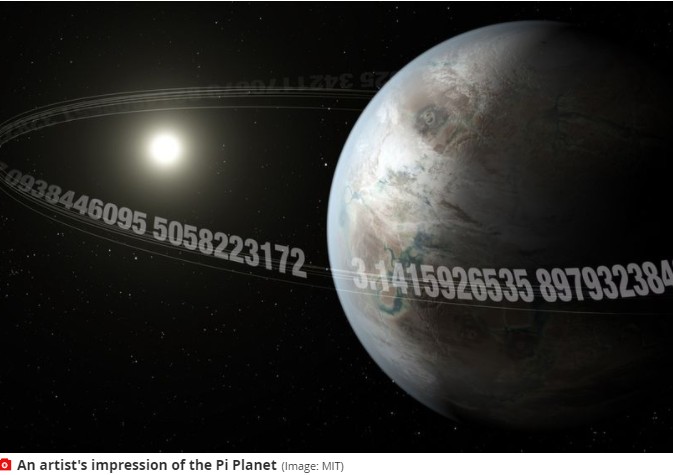Tech
Astronomers Discover Non-Habitable Earth-Sized ‘Pi Planet’ With A 3.14-Day Orbit
The planet zips around its star every 3.14 days – a number famous for being the first three digits of the universal mathematics constant, pi
Astronomers have discovered a new Earth-size planet dubbed the ‘pi planet’, due to its 3.14-day orbit..

The planet was discovered by researchers at Massachusetts Institute of Technology, using data from NASA’s Kepler Space Telescope.
The planet zips around its star every 3.14 days – a number famous for being the first three digits of the universal mathematics constant, pi.
Prajwal Niraula, a graduate student who led the study, said: “The planet moves like clockwork.”
The researchers estimate that the planet has a radius of 0.95 that of Earth’s, making it very similar in size to our planet.
It orbits a cool, low-mass star that’s about one-fifth the size of the sun, according to the researchers.
But while it takes Earth 365 days to orbit the sun, the planet circles its star ever 3.14, at blistering speeds of 181,000 miles per hour.
While the planet is likely terrestrial, the researchers don’t think it’s habitable.
Its tight orbit brings the planet close enough to its star to heat its surface to temperatures of around 176°C.
Mr Niraula explained: “This would be too hot to be habitable in the common understanding of the phrase.”
The researchers believe that there could be many more planets like the pi-planet out there, which could be discovered with the James Webb Space Telescope.
Mr Niraula added: “There will be more interesting planets in the future, just in time for JWST, a telescope designed to probe the atmosphere of these alien worlds. With better algorithms, hopefully one day, we can look for smaller planets, even as small as Mars.”
-

 Celebrity Gossip & Gist2 days ago
Celebrity Gossip & Gist2 days ago“The money wey dem pay me don expire” – Moment Burna Boy stops his performance at the Oando PLC end of the year party (Video)
-

 Economy2 days ago
Economy2 days agoGoods worth millions of naira destroyed as fire guts spare parts market in Ibadan
-

 Celebrity Gossip & Gist14 hours ago
Celebrity Gossip & Gist14 hours agoMoment stage collapses on Odumodublvck during concert performance (Video)
-

 Economy13 hours ago
Economy13 hours agoPresident Tinubu cancels Lagos engagements in honor of food stampede victims




